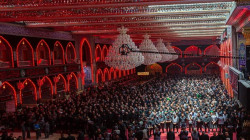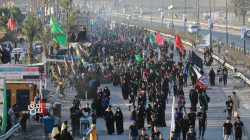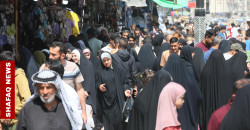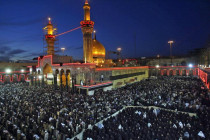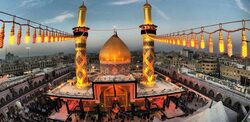The Husseini Pulpit: A platform of resistance and reform across centuries
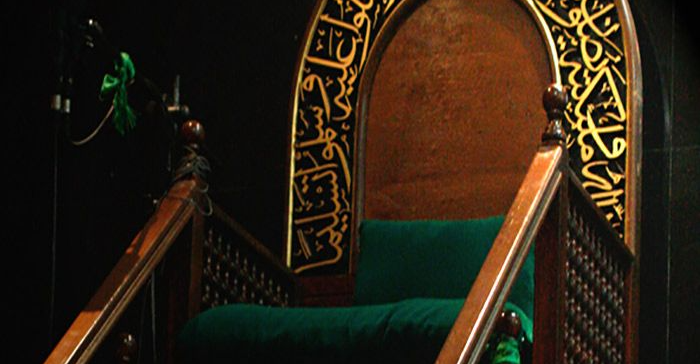
Shafaq News - Karbala/Baghdad
The manbar al-Husseini (Husseini pulpit) stands today not only as a religious institution but as one of the most enduring tools for political resistance, moral awakening, and communal reform in the Shiite world. Rooted in the memory of Ashura and the tragedy of Karbala, the pulpit continues to shape public discourse and collective identity across generations and geographies.
Historical Anchor of Truth-Telling
According to historians and religious scholars, the Husseini pulpit began shortly after the Battle of Karbala in 680 CE, when Imam Zayn al-Abidin (Imam Hussein's son) and Sayyida Zaynab (Imam Hussein's sister) took to public platforms to expose the tyranny of the Umayyad regime and narrate the oppression suffered by Imam Hussein ibn Ali, the Prophet Muhammad’s grandson. What began as spontaneous speeches became a ritualized practice of remembrance and resistance, especially during the time of Imam Jaafar al-Sadiq, who encouraged poets to recite elegies commemorating Hussein's martyrdom.
As noted by Sheikh Dr. Faisal al-Kadhimi, the pulpit became a means to "expose tyrants and preserve the revolutionary essence of the Husseini message throughout Islamic history." Even during the repressive Umayyad and Abbasid eras, poets like al-Kumayt al-Asadi, al-Tirmamih ibn Adi, and Daabal al-Khuzai used poetry to awaken public conscience—a form of resistance that defined the manbar’s early mission.
Historical Contexts
Throughout various Islamic eras—particularly under the Buyids and Sufis—the Husseini pulpit transitioned from clandestine gatherings to publicly sanctioned platforms. Its formalization allowed it to become not just a space of mourning, but a political stage where historical injustice could be confronted and communal values defended.
The Buyids did not invent the majalis (mourning gatherings), but they legitimized them on a state level, setting a precedent for political tolerance of the Shiite narrative in Baghdad and beyond. Even then, the pulpit faced repression. Al-Kadhimi recounts the story of a female mourner in Baghdad who was executed for her elegies—a poignant reminder that the pulpit has always borne a cost for speaking truth to power.
In the modern era, according to Sheikh Haider al-Shammari, the pulpit has become a multi-platform media institution, extending its reach through satellite television and digital channels. It continues to shape spiritual identity while engaging with contemporary political realities across Iraq, Lebanon, Iran, and the broader Shiite world.
Political Compass
In Iraq, the Husseini pulpit played a major role in mobilizing public sentiment during the 1920 Revolution against British colonial rule and again during the 1979 Iranian Revolution, where it served as a vehicle for anti-imperialist and anti-authoritarian discourse.
Al-Shammari emphasized that the pulpit "has never been merely a platform for weeping—it is a school of thought, instilling loyalty to the Ahl al-Bayt (Prophet Mohammed’s family) and reinforcing beliefs in monotheism, imamate, and moral resistance." Its content has long exceeded ritual lamentation, evolving into a political sermon of national relevance.
Post-2003 Iraq
Following the US invasion of Iraq in 2003, the Husseini pulpit faced new threats—from terrorism, sectarianism, political fragmentation, to socio-economic collapse. Yet, as noted by Sayyid Abadi al-Mousawi, the pulpit maintained its credibility and influence by adhering to the guidance of the Marji'iyya (Shiite religious authority).
Al-Mousawi noted that in recent years, the pulpit shifted toward constructive criticism, promoting unity among Iraq’s diverse communities and speaking against both internal and external political conspiracies. It also played a key role in supporting reform protests, while cautioning against their politicization.
Despite some instances of sectarian rhetoric, which al-Mousawi described as "exceptions that do not reflect the pulpit’s core," the dominant message remains one of national cohesion, social justice, and Islamic humanism.
Religious Identity
The pulpit’s political role is not partisan but deeply rooted in the spiritual rebellion embodied by Imam Hussein. It rejects injustice not as a political slogan but as a religious imperative. As al-Shammari warns, the pulpit must avoid becoming a tool of narrow political interests, and instead continue to speak on behalf of the broader community’s concerns—poverty, inequality, governance, and dignity.
The phrase “Hayhat minna al-dhilla” (Never to humiliation) is more than a historical chant—it embodies a living political philosophy. Through the Husseini pulpit, this call resonates across generations, keeping the memory of Karbala alive not merely as a past tragedy, but as a continuing call for justice in the present.
Written and edited by Shafaq News staff.

